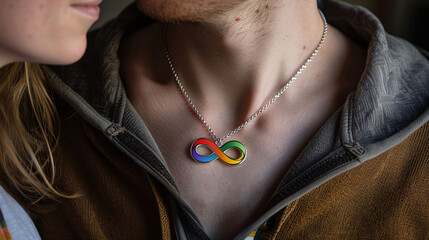Fashion in Japan is renowned for its unique blend of traditional aesthetics and modern innovation. The country’s street style is a global phenomenon, influencing trends worldwide. Among the myriad elements that constitute Japanese fashion, chains have emerged as a significant accessory. This article delves into whether chains are an acceptable fashion statement in Japan, exploring their historical roots, cultural significance, and contemporary adoption in various fashion subcultures.
Historical Context of Chains in Japanese Fashion
Chains have been part of human adornment for centuries, symbolizing power, status, and identity. In Japan, the historical use of chains can be traced back to the samurai era, where metal craftsmanship was highly developed. Armor and accessories often featured intricate chain designs, highlighting the blend of functionality and artistry. This historical backdrop sets a foundational appreciation for metalwork and adornments, paving the way for chains to be integrated into modern fashion.
The Rise of Street Fashion in Japan
Japanese street fashion is a melting pot of styles, where individuality and creativity reign supreme. Tokyo neighborhoods like Harajuku, Shibuya, and Shinjuku have become synonymous with avant-garde fashion. In these areas, chains have found their place as bold fashion statements. They are often seen in punk and gothic styles, where they add an edge to outfits. The versatility of chains allows them to be used in various ways—around the neck, as belts, or as accents on clothing and accessories.
Chains in Japanese Pop Culture
Pop culture in Japan heavily influences fashion trends. Anime, manga, and J-pop idols often showcase unique and daring styles that fans eagerly emulate. Chains have made their mark in this realm as well. Characters in popular anime and manga series often sport chains, contributing to their cool and rebellious image. J-pop and K-pop idols frequently incorporate chains into their stage outfits, further cementing their acceptability and desirability among young fans.
Also Read: Emerson Fashion Blogger: A Journey Through Style and Inspiration
Fashion Subcultures Embracing Chains
Japan’s fashion landscape is rich with diverse subcultures, each with its own distinct style. Chains are particularly prevalent in punk, gothic, and Visual Kei subcultures. In punk fashion, chains symbolize rebellion and non-conformity. Gothic fashion uses chains to add a dark, romantic edge to elaborate outfits. Visual Kei, a movement that combines rock music with flamboyant fashion, often incorporates chains to enhance the dramatic and androgynous looks of its artists. These subcultures play a crucial role in mainstream acceptance of chains in fashion.
Chains in High Fashion and Designer Labels
High fashion in Japan has also embraced chains, albeit in more refined and sophisticated ways. Designers like Yohji Yamamoto, Rei Kawakubo of Comme des Garçons, and Issey Miyake have all experimented with chains in their collections. These designers use chains to add texture, movement, and a sense of edginess to their creations. The presence of chains in high fashion not only legitimizes their use but also inspires more mainstream adoption.
Cultural Significance and Symbolism
In Japanese culture, symbolism and aesthetics are deeply intertwined. Chains can carry various meanings depending on their use and context. They can symbolize strength, unity, and continuity. In some contexts, they might also represent bondage or restriction, adding a layer of depth and complexity to their fashion usage. Understanding these nuances is essential for appreciating how chains are perceived and utilized in Japanese fashion.
Chains as a Unisex Accessory
One of the remarkable aspects of chains in Japanese fashion is their unisex appeal. Unlike some fashion elements that are gender-specific, chains are widely accepted and worn by all genders. This inclusivity speaks to the broader trend in Japanese fashion of blurring gender lines and promoting androgyny. Chains add a versatile and edgy element to both men’s and women’s fashion, making them a popular choice for accessorizing.
DIY Culture and Personalization
The DIY (Do It Yourself) culture in Japan has a significant influence on fashion. Individuals take pride in personalizing their outfits and creating unique looks. Chains are a popular accessory in this context because they are easy to modify and incorporate into various styles. Whether it’s adding chains to a pair of jeans, customizing a bag, or creating jewelry, the possibilities are endless. This DIY approach not only fosters creativity but also makes fashion more accessible and personalized.
Future Trends and Sustainability
Looking ahead, the use of chains in Japanese fashion is likely to continue evolving. Sustainability is becoming a key consideration in fashion, and chains offer opportunities for upcycling and repurposing materials. Vintage and second-hand chains can be integrated into new designs, promoting eco-friendly fashion practices. As consumers become more conscious of their environmental impact, the demand for sustainable fashion will likely influence how chains are used and perceived.
In conclusion, chains are not only acceptable in Japanese fashion but are a prominent and influential element. Their historical roots, cultural significance, and versatility make them a staple in various fashion subcultures and high fashion alike. As Japan continues to lead in innovative and avant-garde fashion, chains will undoubtedly remain a significant accessory, symbolizing both tradition and modernity.


1 thought on “Are Chains Acceptable Fashion in Japan?”